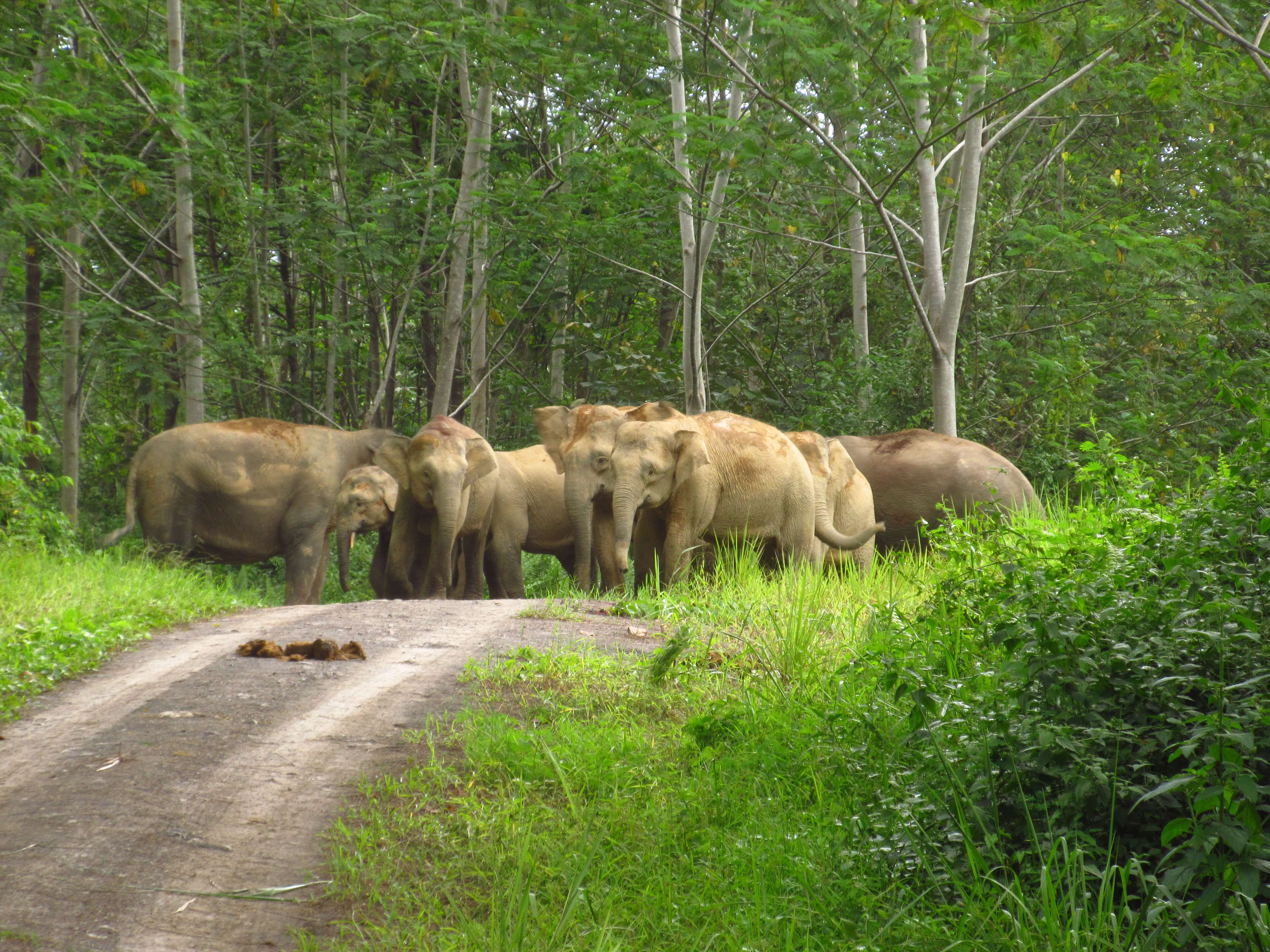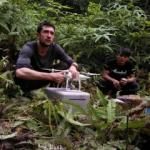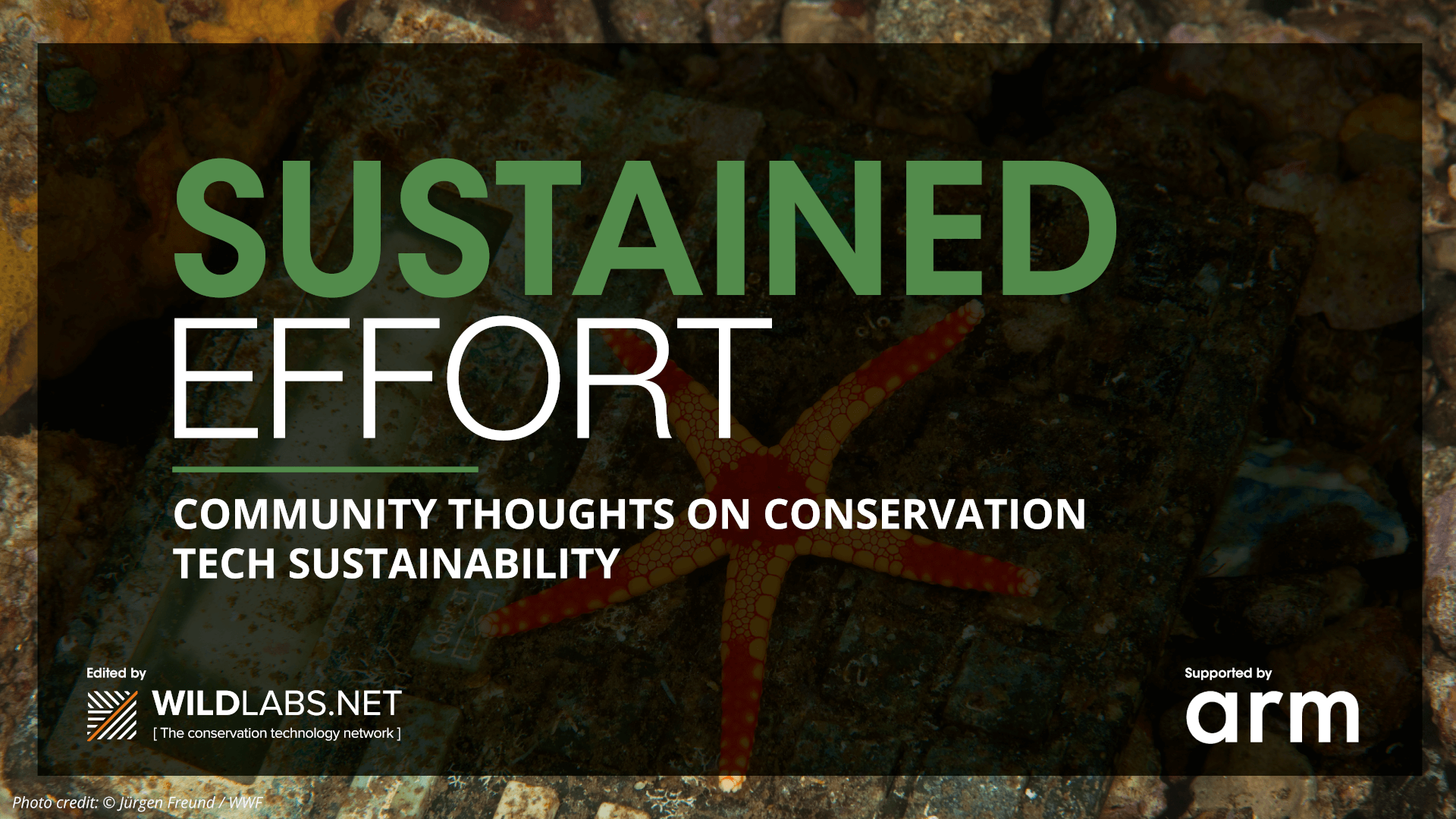The dual meanings of sustainability in conservation - both environmental impact and project longevity - often go hand-in-hand. Through efficient project design, empowering local conservation leaders and focusing on capacity-building, and making the most of local resources, we can create a long-term positive impact with our work, and just as importantly, reduce the negative impacts of travel and technology. Here, Sol Milne discusses his experiences with both meanings of sustainability, and how uncoupling conservation work from colonial ideas can help us build a more sustainable future for our field.
Carbon Footprints and Capacity
By Sol Milne
I love working in this field & count myself extremely lucky to be able to do what I am now. Ironically though, my career in conservation biology has so far been wildly unsustainable. I’ve traveled around a decent chunk of the world a few times and conducted fieldwork using almost every form of transport available. My carbon footprint probably outweighs any of my friends’ who don’t even work in the field of conservation. The direct environmental impact of conservation work needs addressing, and there are numerous ways this can be accomplished.
In this article, I will outline a few of the lower hanging fruits that can be addressed directly to improve the sustainability of our field. But the main focus is a more pervasive theme within conservation fieldwork: colonialism. I believe this is what makes work in this field truly unsustainable in the sense of being unable to continue indefinitely, something that often coincides with environmentally unsustainable work.

Anti-colonialism rings all sorts of alarm bells. It doesn’t mean you should go out & overthrow your local governor general. It’s simply not building from a system that gives one entity power over another by means of controlling resources and agency to make decisions. When research funding is managed by a body excluding local stakeholders, project aims will naturally lean in favour of the researchers rather than those who the research may impact. This directly impacts the longevity of conservation projects. It feels obvious that unless local stakeholders are involved at onset, initiatives may run out of steam, as the central players may not even be there to stay.
Conservation is an ongoing process, and as the needs of local people are dynamic, they must be directly calling the shots to ensure their own representation. My experience has shown that people are an intrinsic part of any landscape. No conservation strategy built around a philosophy that excludes people can persist sustainably, in terms of longevity or footprint.
My specialty is ecological surveying using drones. Drone research is a democratizing tool in conservation, as the skill can be learned with a small initial investment & provide irrefutable evidence of land-use change. Aerial monitoring provides local groups with a powerful means of land-surveying. However, unless local stakeholders can use this tool independently, they will be reliant on outside consultants. While economically useful for drone contractors like me, it means local initiatives are constrained by funding available to hire these specialists.
During my PhD work, I was able to experiment with different drone models, to figure out what worked best for the kind of surveying we were doing. The best part was that both myself and the local team I was working with were starting from scratch. This meant we combined our experience and developed the methods together.
We were lucky to be trained by a local drone specialist who conducts long range drone surveys across Borneo. This was useful for multiple reasons:
We now had a supplier of parts for when the drone inevitably broke in the future. The trainer was a native speaker of Malay and could comprehensively teach skills to the local research assistants, while hiring a local specialist brought in money and promoted his business. Finally, it meant that local professionals were getting involved in conservation research projects. The key methods employed in our research were no longer exclusive to foreign scientists who may not have otherwise interacted with local stakeholders in a meaningful or lasting capacity.

The team of five research assistants who worked with me are now qualified and talented drone pilots, familiar with drone work in forest landscapes. This project’s conservation output is still in the works, but this is likely the most lasting current result of this research, locally.
They put these skills to use to this day, working for the Sabah Forestry Department, mostly in the monitoring of concession boundaries. When starting a new project, I try to incorporate this goal, providing training in skills that will provide employment beyond the scope of the work.
To the same point, local research assistants are probably the most under-appreciated demographic in conservation research. When scientists finish fieldwork they often never see them again, even though they might develop great working relationships in the field.

On one occasion, a member of the team I was working with actually saved me from being maimed when I stomped about in the forest and almost trod on a bomb used for killing pigs. These local team members are vital to sustainable conservation work around the world and need all the support to develop their skills and livelihoods that can be provided.
I’m grateful to be working with a group whose approach is built on respectful engagement. The Cobra Collective uses an approach of community owned solutions: providing capacity building to enable long-term collaboration. The point is to provide tools for local communities, which will serve their own interests and needs. This extends beyond, for example, training in drone surveying, and into the management of the databases and sovereignty in ownership of this information. The community of focus decides what this information is used for, and active collaboration means that cutting-edge techniques are adapted to traditional skills, such as navigation through oral history.
Vitally, consensual decision-making is employed by the group. This means that members formulate decisions together, strengthening the team dynamic and developing trust and skills between the parties involved. It sounds ideal, but this approach is rarely encountered in the field or in the ethos of researchers conducting fieldwork, and needs to be more widely adopted in the future. This is the approach that empowers local communities and fosters the development of lasting, locally sustainable projects.
Drone manufacturers often want you to buy the gaudiest and most expensive kit. More often than not, most aerial surveying projects do not require overly sophisticated drones or cameras. It’s important to use networks like WILDLABS to talk with experts who have made all possible mistakes already, so that you can build on their experience. Many drone projects have started with big promises and expectations, and an “all the gear but no idea” approach. This was definitely the way I used to see things - the technology is exciting! But drones are expensive, both to the bottom line of the project budget and in terms of human and environmental costs of producing the equipment.
For researchers making a foray into this field, talk to drone experts and run your ideas past them. Simplicity is key in tropical fieldwork, and you most likely won’t need a swarm of sentient fixed wings when an old Phantom with a Canon may just do the trick.
Now for the low hanging fruit!
Firstly, expensive conferences in exotic destinations are a lot of fun and fantastic opportunities to develop new projects with interesting researchers. I enjoy these events and they are of great value to early career researchers. However, admission, travel and accommodation are expensive and inaccessible to students with few opportunities for funding. And just as importantly, these events mean researchers studying how to reduce human impacts on nature must extend their carbon footprint to even participate in the conversation.
I like the virtual format that WILDLABS has often presented for engaging fellow researchers in their work & providing breakout spaces for participants interested in specific areas of conservation. This format should be adopted by other groups, serving as an accessible and low carbon footprint means for direct engagement in research. There will be fewer chances for a drink and dance like at a regular conference, but perhaps this can still be arranged when researchers meet in person after establishing a collaboration!
Secondly, funding opportunities for the training of local researchers are few and far between. This needs prioritisation in conservation research that engages with local researchers and research assistants. In many cases, only participants with higher education are eligible, while many research assistants in developing countries do not have this privilege. I would like to see funding allotted to this more often in new projects, providing lasting skills to local researchers who can carry on conservation work in their own region with less impact.
Thirdly, foreign researchers should make a concerted effort to speak the language in the country they are studying in. This has opened up so many opportunities for me and given me a chance to make lasting connections and friends. This effort demonstrates respect and allows you to convey your meaning more effectively. I cannot express how useful this is, and while it’s certainly not easy, it goes very far in developing meaningful connections.
There is plenty of ego in our field, as there is in many others. That’s okay, but not at the cost of resources and developing meaningful collaboration. Respectful collaboration is key to subverting this. It prevents us from reinventing the wheel when developing new methods and allows new ideas to flourish. It’s the part of this work that I honestly enjoy the most, having conversations about all the beautiful, glittering ideas that could exist when we pool together our knowledge, humor and failures. The few of them that do come to fruition feel much more valuable than the goals developed in isolation, because they are shared.
And ultimately, this is how we can create a more sustainable future of conservation tech: together.
Download the Sustained Effort Series
This article is from our latest editorial series, Sustained Effort: Community Thoughts on Conservation Tech Sustainability.
Our series Sustained Effort brings together conservation tech users and makers to share their own perspectives on this topic. Through these case studies, we'll consider the current challenges of working sustainably in our field, but more importantly, how we can all take realistic, practical, and effective steps toward not only lessening our negative impact right now, but discovering larger steps toward the longterm, system-wide change needed to make conservation technology truly sustainable for our planet.
The entire Sustained Effort series is now available to download here on WILDLABS.




Add the first post in this thread.